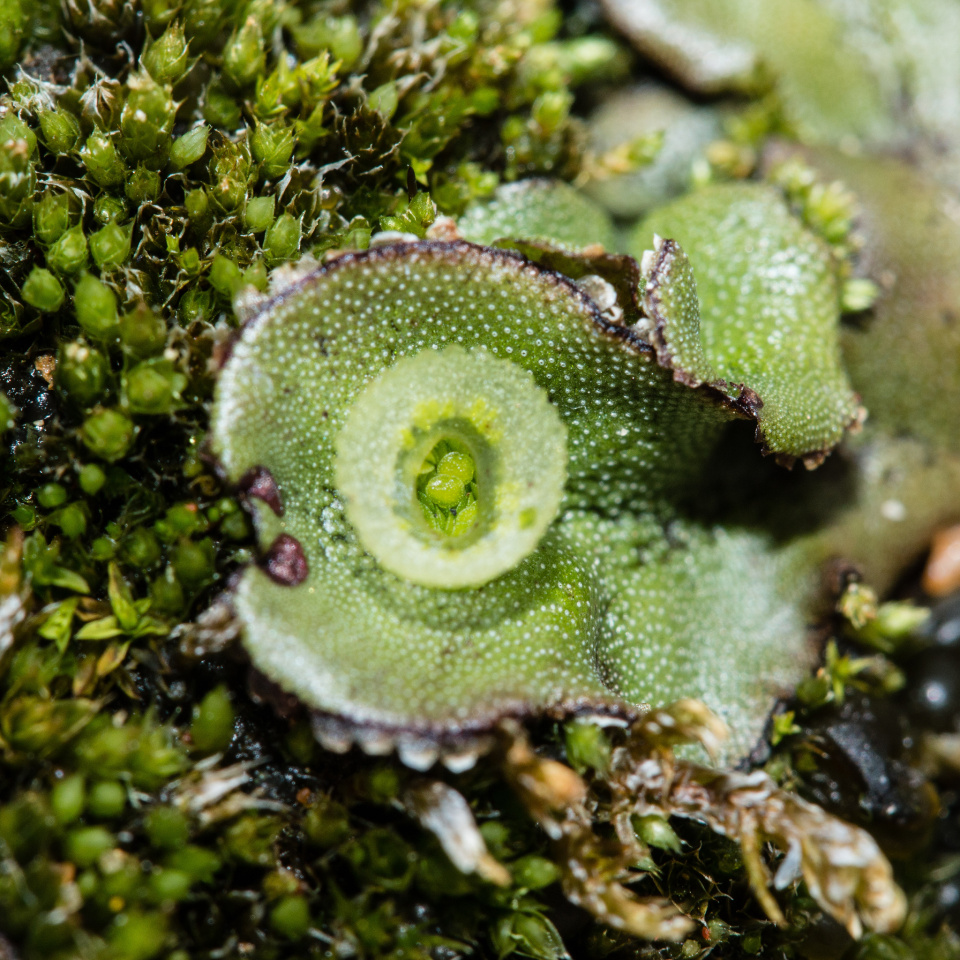Gemma cup
A long day out to a disused sand and gravel quarry near Ipswich, to identify the conservation management required in the coming season. We avoided the A14 which is even more hideous than usual at the moment as a result of roadworks, travelling instead via the fens which worked very well. Chris shared the drive, though it took him a while to get used to the twisting nature of Suffolk roads!
This is an image of the gemma cup of Common Liverwort Marchantia polymorpha. A gemma (plural gemmae) is a single cell, or a mass of cells, or a modified bud of tissue, that detaches from the parent and develops into a new individual. The production of gemmae is a widespread means of asexual reproduction in both liverworts and mosses. In liverworts such as Marchantia, the flattened plant body or thallus is a haploid gametophyte with gemma cups scattered about its upper surface. The gemmae are small discs of haploid tissue, and they directly give rise to new gametophytes. They are dispersed from gemma cups by rainfall. The gemmae are bilaterally symmetrical and are not differentiated into dorsal and ventral surfaces. The mature gemmae fall on the ground and if conditions are suitable their germination starts immediately. The surface of the gemma which comes in contact of the soil gives out many rhizoids. This surface eventually becomes the lower(ventral) surface of the thallus. Meanwhile, the apical cells present in the two lateral notches become active and form two thalli in opposite directions.
- 12
- 4
- Canon EOS 70D
- 1/250
- f/9.0
- 60mm
- 200


Comments
Sign in or get an account to comment.


